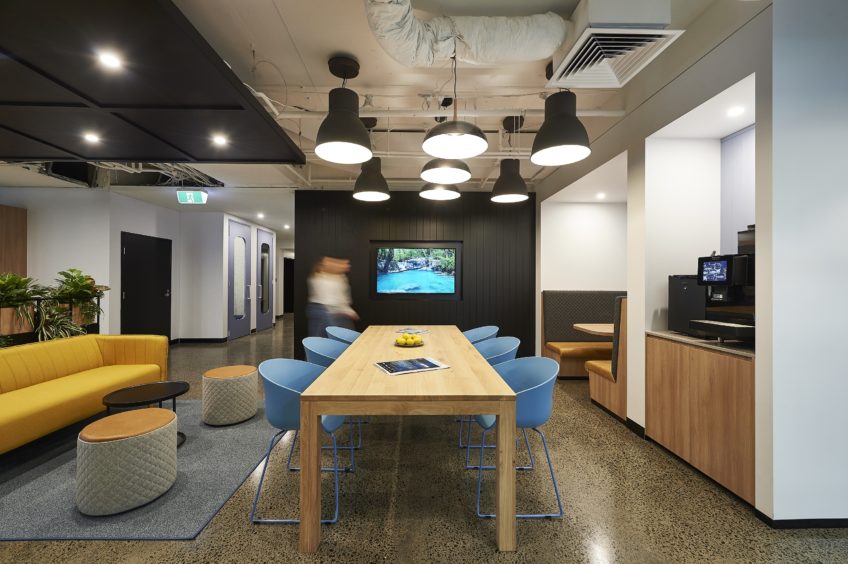When designing a top-notch commercial space, there are many things at play. It needs to be simple, trendy, inspiring, pleasant, cost-effective and comfortable for both workers and visitors. It’s not always easy to find the right balance especially as trends are constantly varying. But leaving things as they are will only result in an outdated office design. That kills output and gives off a feeling of a failing business.
To make things even more difficult, belief and tastes of employees. Consumers and visitors are constantly changing and evolving so business must also strive to adapt their office interiors. So they reflect the current state of affairs. Happily, some interior design trends can be very helpful in keeping your commercial property fresh, inviting and up-to-date.
Form and functionality
While the cost of office furniture was once the primary driving force of all office design. Today there’s a massive shift towards dynamic spaces and appropriate design. So it’s much more important to have a modern workplace that is both cost-effective and comfortable.
You can expect to see more seating designs with headrests and adjustable arms, standing height desks and footrests. There's also a desire to incorporate more durable materials such as metal finishes, tempered glass and rustic wood.
However, quality design office doesn’t surely mean high cost. Successfully designed office spaces unite the concepts of both form and function. And are able to create a professional and aesthetically pleasing work environment. As we spend a large portion of our lives in an office, it’s imperative to have high quality in its every aspect. It needs to be a place where employees want to be and where they feel comfortable and inspired. A great office interior can make a huge difference both for the business and its employees as it has the power to breathe in new life into a company and transform the workspace into an engaging environment.
Open concept workspace
The open-concept office layout is reflective of the modern worker that is no longer an isolated unit but rather a productive and communicative part of a larger group. There's a more likely approach in commercial design that is transforming closed-off workspaces with cubicles and partitions into a circular space with open workstations that allow communication, concert and knowledge transfer.
Whimsical combinations and patterns
There's likelihood in the interior design of today that shifts from the use of standard themes to the use of a wider range of unexpected and whimsical touches that give each space more individuality. For instance, there's general use of miss-matched floor tiles that if used correctly, create a kind of a work of art under everyone's feet. There are also many great examples in the use of large-scale angel patterns on both floors and walls that are designed to introduce more drama in generally more sterile spaces such as hospitals or hotel lobbies.
Deeper colour palette
This year favours deeper cooling tones that are reflective of the inherent beauty of nature. The main concept is using charcoals and greys in combination with taupe, ivory and stone but if this seems a bit too cold and sterile, simply spice things up with a splash of zesty lime green or fiery paprika red.
Double-duty designs
With cost-effectiveness being one of the priorities, businesses are on a constant lookout for ways of being more economical. So they're embracing multi-purpose design and pieces that can perform double-duty. This ingenuity can be seen tablet arms on lounge chairs, slide-out seats in filing cabinets and adjustable and movable furniture pieces.
Eco-friendly build
Incorporating eco-friendly design features into contemporary office spaces has become a standard practice by now. And with constant developments in materials and technology, this is no longer a challenging task. For instance, a very bright future lies in the use of glass in eco-builds. Additionally, more and more businesses are installing photovoltaic glass window panes. Which absorb solar energy that powers the commercial space.
Biophilic design is another great practice that uses nature as an architectural tool and includes it throughout the space using a variety of textures, patterns, live plants and natural light.
Interior design has a powerful impact bit only on our homes. But on workspaces as well, and it aims at creating a wholesome space. That brings together all relevant features to help employees feel inspired, productive and comfortable. As design trends change to meet the requirements of businesses, one thing remains constant. The need to have a simple space that corresponds to the company’s needs and enhances workers’ performance and creativity.
By Lillian Connors

